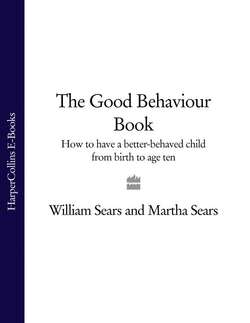Читать книгу The Good Behaviour Book: How to have a better-behaved child from birth to age ten - Martha Sears - Страница 54
helping your child play alone
ОглавлениеPart of self-discipline is the ability to enjoy playing alone. Before eighteen months of age, a baby will do this only in short spurts and will be eagerly checking in with mother frequently, either physically coming to her or finding her with his eyes. Attachment-parented babies may prefer to be in touch with mother almost constantly, and this is healthy. It seems as though allowing the baby to have his fill of mother’s presence as an infant and young toddler prepares him for time on his own. He will know how to manage himself and won’t need to be entertained as much as the baby who is not well connected.
The time between the ages of fourteen and eighteen months is very hard for mothers. The high-energy toddler wants to do everything, but he still needs mother involved “big time”. Mothers of one-year-olds need to gear up for this marathon spurt of giving, because the tendency is to think, “Ah, now he’s one – I’ll be able to ease off.” You will eventually, but not yet. Hang in there through age eighteen months, then be alert for signs that your toddler is trying to make space between you. Some mothers might tend to hover and smother and continue to hang on, but remember, the one-and-a-half-to-two-year-old needs to become his own person. You will see these efforts more and more. At first you won’t believe your eyes. Your toddler will do what he sees you doing. She will tend doll babies, get out pots and pans, want to play at the sink, dig in the dirt with spoons. You name it – the possibilities are endless. She’ll want you to pretend with her a bit. It’s fun to be a dog or a lion, but she really only needs you to get her started. Pretend tea parties or picnics where you gobble up everything she hands you don’t require much involvement from you.
By age three, a child’s imagination and creativity will allow him to be able to have fun with anything. Keep toys simple and basic – building blocks, balls, dolls and blankets, cars and trucks (no batteries please). A four-year-old alone in a room with nothing to play with will figure out how to use shoes and socks as cars and people or as cradles and dolls.
By the time your child is six, you will have reached what one psychologist we talked to calls “planned detachment”. Your child will look in for breakfast, go out the door, look in for lunch, and be gone again. You’ll say, “You’re looking well, dear”, you’ll write a note to remind him of chores, and finally at dinner you’ll get to talk a little. After dinner some card playing, singing, or other family-oriented activity reconnects you with this individual who used to stick to you like Velcro.
We gave our toddlers chances to mess up. They learned from their parent-supported failures. When Stephen insisted on having juice in an open cup with no help from Martha, she let him try it, and he spilled it all over himself. The cold juice running down his body startled him. For the next sip he was willing to be less impulsive; he listened closely to Martha’s advice to tip the cup “slowly”. Because of the mutual trust and sensitivity that we developed during their first year, it was easier for our toddlers to respect us as authority figures. We were able to convey to them what behaviour we expected, and their actions often showed that they wanted to please themselves by pleasing us.
Once we reach that level of discipline, we feel tremendous job satisfaction. This is really what discipline is all about. It is not what we are doing to our children, it is what we are doing for and with them, and what they are doing for themselves.
